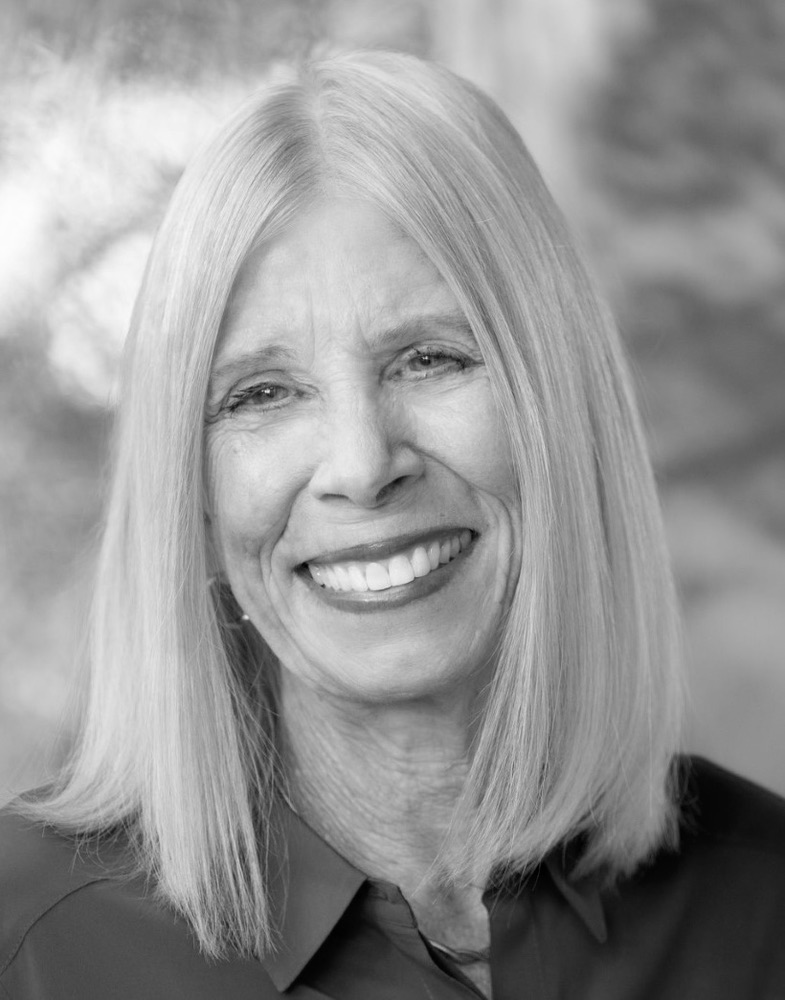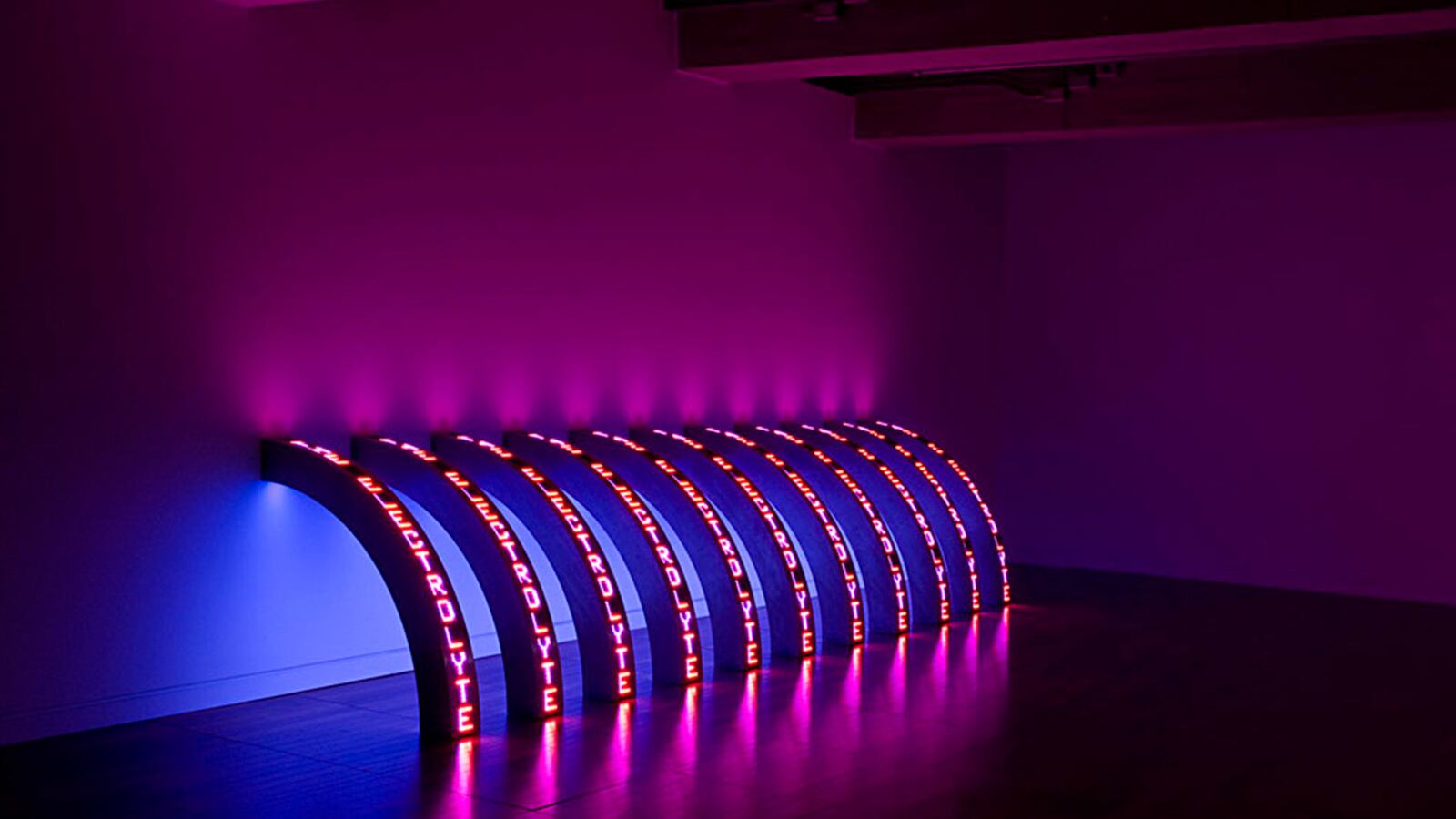Hasan Elahi fell in love with country music almost as soon as he immigrated to New York City from Bangladesh when he was 7. He discovered his enduring favorites—Johnny Paycheck, George Jones, Charlie Pride, and Ronnie Milsap—on a country AM station in the city. This music, at once patriotic and sad, along with the city’s diverse neighborhoods and melting-pot public schools, helped shape him into an American.
But later on, when he grew up and became an artist, his love of red-state country music couldn’t protect him from interrogations and lie detector tests after he landed on the FBI’s terror watch list. He survived the ordeal, and, with an immigrant’s characteristic knack for adaptation, turned his travails with the FBI into continuously changing, data-driven works of art.
Now Elahi is a 42-year old TED Talk celebrity, professor at the University of Maryland, and one of several “covert artists” in a first-of-its-kind exhibit in Scottsdale, Arizona, that showcases citizen-journalist-like, data-driven art projects that reflect human responses to a global explosion of post 9-11 surveillance and secrecy.

The show at the edgy Scottsdale Museum of Contemporary Art, in a wealthy suburb of Phoenix, is titled Covert Operations: Investigating the Known Unknowns, and opens Saturday. It borrows its title from a statement former Secretary of Defense Donald Rumsfeld made at a press briefing in 2012. Responding to a reporter’s question about weapons of mass destruction, Rumsfeld said, “…there are things we know we know. We also know there are known unknowns; that is to say we know there are some things we do not know. But there are also unknown unknowns—the ones we don’t know we don’t know.”
The exhibit consists of 11,000 square feet of exhibits that include an LED display of the autopsy reports of Iraqi, Syrian, and Pashtun detainees who were murdered in places other than Guantanamo by American interrogators from 2002-2004. There are also therapy gaming videos for post 9/11 American veterans with PTSD, likenesses of Saddam Hussein’s underground bunker kitchen, and award-winning photographs documenting the increased militarization of the U.S.-Mexico border.

The invasion of Iraq took place during Claire Carter’s senior year in college and helped shape her personally and professionally. “Things like that never really leave, and it’s not a mistake that this kind of art intrigues me,” the 34-year-old curator of contemporary art for the Scottsdale museum tells The Daily Beast. She spent three years putting the exhibits together, obsessively researching Age of Terror history and fact checking artists’ work before she assembled the show.
She admits the art covers “scary stuff” about the “state of our world.” She hopes visitors who view it will take advantage of the “sacred space” of the gallery to think and talk about surveillance in the post 9/11 world.
Among the most disturbing, poignant works in this gallery of disturbing and poignant works is David Gurman’s “Memorial for a New American Century,” which pulls hourly data from a website recording real-time civilian deaths in Iraq. In Gurman’s exhibit, each civilian death triggers the toll of a bell manufactured in a historic American foundry. As ISIS continues to incite violence and fear and the airstrikes against it rage on, Gurman tells me he has “no idea of what it’s going to do now. It could be a continuous tolling cycle.”
“If [the exhibit] does look really depressing, maybe that is our political reality right now,” Elahi says.

Elahi stumbled into that “political reality” in 2002, when he was detained at a Detroit airport after returning from an art event in Senegal. He says someone in Tampa, where he then lived, had mistakenly informed the FBI that he was an Arab who had packed his storage unit at the U-Store It with explosives before hightailing it out of the U.S.
So when immigration authorities ran his passport through the scanner at the Detroit airport, they learned he was on the terrorist watch list.
“Growing up as an American, I had this understanding of basic rights, and this idea of innocent until proven guilty,” he says. But he learned that’s not the way it works in the Age of Terror, even for a jovial American college professor who likes George Jones songs. He intuited that the FBI agents who interrogated him figured out early on he was absolutely no threat to the homeland, but they were locked into their own nightmare of Byzantine post 9/11 policies and procedures. After six months of intermittent interrogations and several lie detector tests, Elahi got off the hook. But he worried about “things slipping through the cracks in the system” and wanted to “avoid future altercations.” Then it dawned on him—he could surveil himself for the authorities.
After all, he lived with himself 24/7, so he could do a much better job chronicling his whereabouts than the FBI. By 2003, he was well into an ongoing project digitally documenting the humdrum minutiae of his daily life—his bathroom toilet bowls, his airplane meals, his rumpled beds, his bank and phone records, his cash purchases at the drugstore, his real-time GPS coordinates, not to mention all of his travel plans—and streaming it all in no particular order on the web. Now he’s got an ever-growing inchoate cache of tens of thousands of digital images and data bits guaranteed to drive even the most assiduous Age of Terror spy into a data-fatigue-induced nervous breakdown. He “uploads, broadcasts, publishes, places, shares” the images on the web as part of various art projects.
He went through his entire database of over 70,000 images to select pieces for the Arizona show. Thousands of mesmerizing images of Elahi’s OCD self-surveillance blink on several large electronically powered Sputnik-like “orbs” dangling from the ceiling. The Sputnik shapes seem like a nod to Cold War surveillance morphing into Age of Terror surveillance. Elahi hopes people who visit the exhibit will assume the role of FBI agents, trying to piece his life together.
He’ll be watching, of course. He plans on traveling to Arizona soon, to see the exhibit. He’ll be the jolly guy with the camera.





